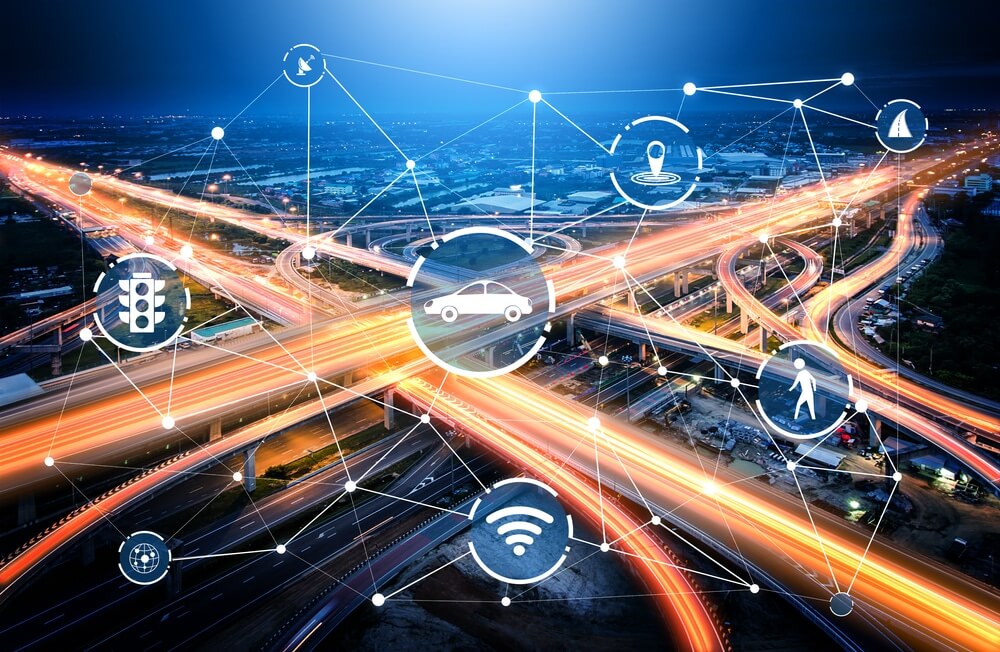In a world fueled by digital convenience and instant gratification, the realm of last-mile delivery is undergoing a profound transformation. The prevalence of e-commerce and food delivery services has elevated the significance of the last leg of the journey – from the warehouse to the customer’s doorstep. The exponential growth of online shopping during the Covid-19 pandemic has amplified the challenges faced by the last-mile delivery system, straining existing infrastructure and giving rise to concerns about traffic congestion and environmental pollution. Against this backdrop, a wave of technological advancements is ushering in a new era of efficient, sustainable, and innovative delivery solutions. Let’s delve into five groundbreaking technologies that are fundamentally reshaping the landscape of last-mile delivery.
1. Delivery Robots: From Sci-Fi to Reality
The advent of delivery robots has not only captured our imaginations but also our streets. In a world that craves convenience, these autonomous couriers have emerged as a dynamic solution. Tech giants like Uber Eats and Domino’s Pizza are capitalizing on this trend. The Covid-19 pandemic has only accelerated the demand for service robots, leading to a 37% surge in global sales in 2021, according to the International Federation of Robotics. Notably, in Leeds, UK, Starship Technologies collaborates with retail chain Co-op, deploying box-sized robots to navigate sidewalks, delivering groceries and packages through an app-managed interface. Beyond food, startups like Rice Robotics in Hong Kong have engineered versatile robots applicable across healthcare and hospitality sectors.
2. Electrifying Delivery: Greening the Last Mile
As environmental consciousness takes center stage, the transition to electric delivery vehicles gains traction. A 2020 report by the World Economic Forum projected a 32% surge in emissions from last-mile delivery traffic by 2030. Responding to this challenge, Amazon, a delivery giant, joined hands with The Climate Pledge in 2019, pledging to achieve net-zero carbon emissions by 2040. In Europe, Amazon is investing $972 million to bolster its electric vehicle fleet, targeting 10,000 electric delivery vans on the continent by 2025. Simultaneously, Amazon’s collaboration with Rivian in the US aims to introduce 100,000 electric delivery vehicles on the roads by 2030. Innovative initiatives like India’s Altigreen electrifying three-wheeled rickshaws and Estonia’s Vok offering electric cargo bikes for delivery underscore the industry’s commitment to sustainability.
3. Smart Parcel Lockers: Efficiency and Convenience Converge
Innovations in last-mile delivery extend beyond doorstep drop-offs, embracing smart parcel lockers. As a sustainable alternative, these lockers tackle two crucial aspects: efficiency and security. An early mover in this domain, Belgian startup Bringme introduced smart lockers in 2012, effectively reducing repeated deliveries and carbon emissions. Smart lockers offer recipients the flexibility to collect packages at their convenience, curbing unnecessary trips. These lockers, in addition to minimizing environmental impact, double as secure storage solutions, proving especially useful when recipients are unavailable to receive packages immediately. The process is seamless – users receive a QR code through an app, enabling access to their package in an unlocked compartment.
4. Autonomous Vehicles: Paving the Way for Driverless Deliveries
Autonomous vehicles, with their potential to revolutionize the delivery landscape, are capturing attention worldwide. Uber Eats’ partnership with Nuro exemplifies this transformative shift, with trials of driverless delivery pods taking place in California and Texas. Nuro’s third-generation vehicle, a brainchild of former Google engineers, boasts an impressive cargo capacity, accommodating nearly 500 pounds. Equipped with modular inserts that facilitate temperature control, this emission-free vehicle draws its power from 100% renewable electricity sourced from Texan wind farms.
5. Sky High Deliveries: Taking to the Skies with Drones
The notion of drone deliveries, once confined to science fiction, has taken flight. While Amazon Prime Air navigates regulatory hurdles for full FAA approval in the US, other drone delivery services are soaring ahead. According to McKinsey, over 2,000 commercial drone deliveries were recorded daily worldwide in early 2022, a number that has likely surged since then. Zipline, a US-based startup, has been leveraging drone technology for healthcare deliveries in Rwanda since 2016. In Ireland, Manna Aero is making waves, conducting over 100,000 drone deliveries of goods ranging from groceries to small business orders. A study by Carnegie Mellon University underscores the energy efficiency of small quadcopter drones, ranking them second only to e-cargo bikes in terms of energy consumption and CO2 emissions.
In conclusion, the convergence of cutting-edge technology and evolving consumer behavior is redefining last-mile delivery. These innovative solutions are not merely addressing existing challenges, but actively shaping a more sustainable, efficient, and interconnected delivery ecosystem. Whether through the utilization of delivery robots, the electrification of delivery vehicles, the deployment of smart parcel lockers, the advancement of autonomous vehicles, or the rise of drone deliveries, each breakthrough plays a vital role in propelling the industry forward. As technology continues to intertwine with commerce, the future of last-mile delivery promises a harmonious blend of convenience, efficiency, and environmental responsibility.











